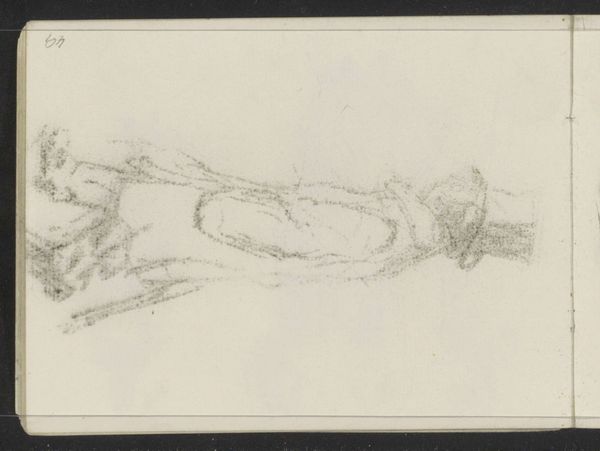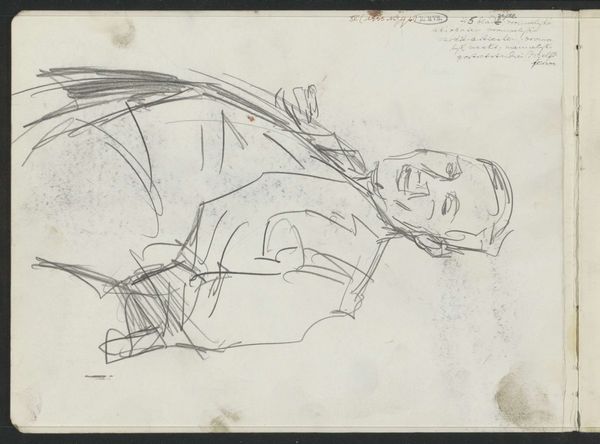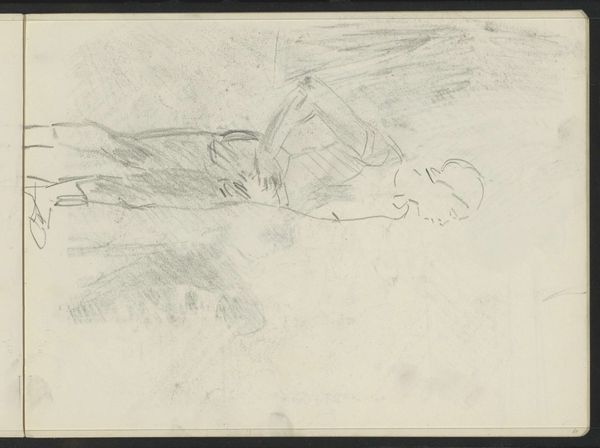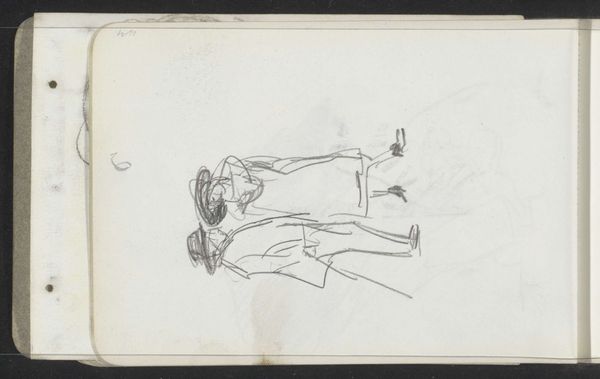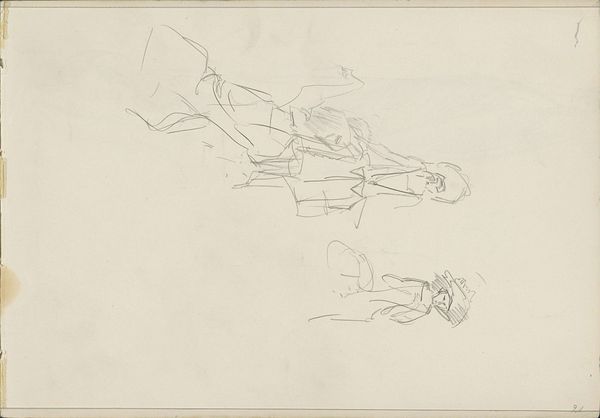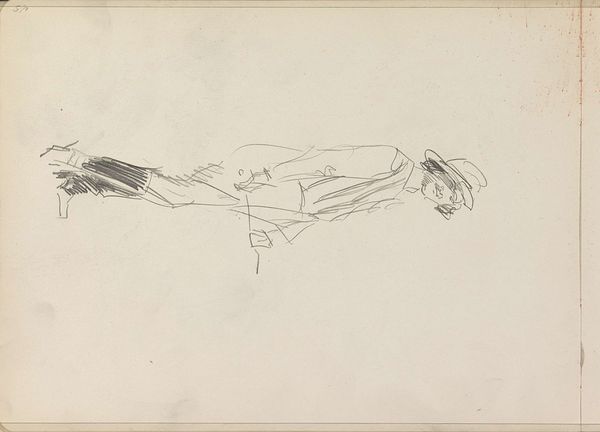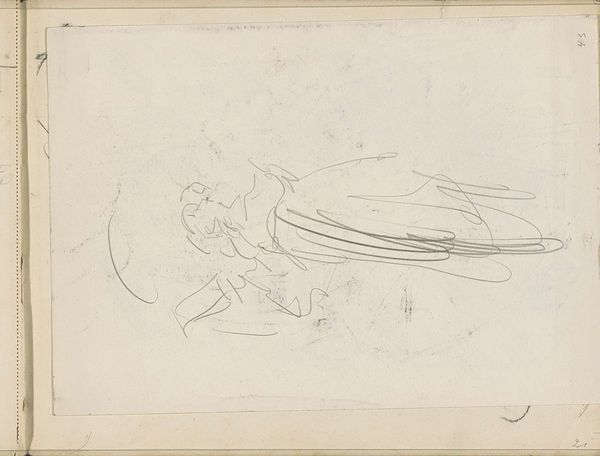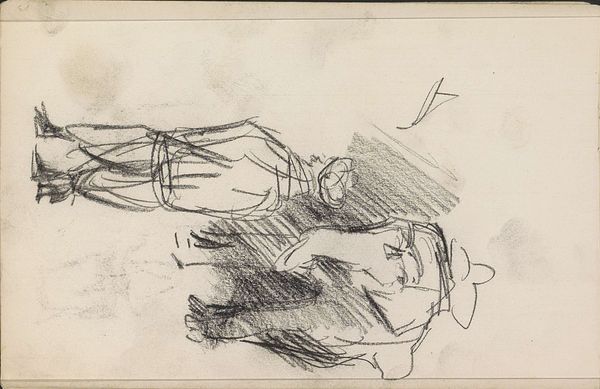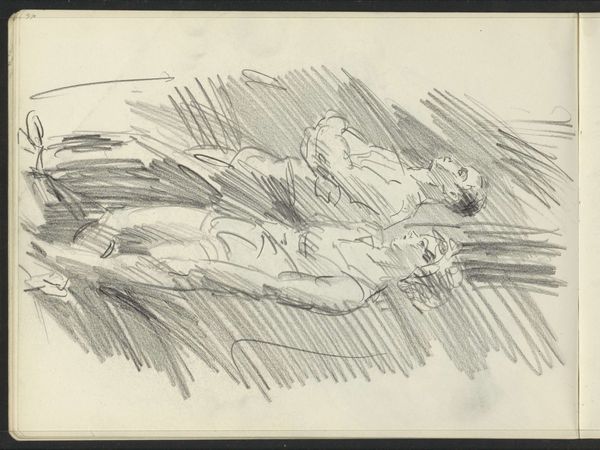
Copyright: Rijks Museum: Open Domain
Editor: This is "Young Women in Bathing Suits, Seen From the Back," a pencil drawing by Isaac Israels, made sometime between 1875 and 1934. There's a casual, almost voyeuristic quality to it, and I'm struck by how the figures are turned away from us. How do you interpret this work? Curator: It's fascinating to consider this piece through a feminist lens. The averted gaze of the women, combined with the presumed male gaze of the artist, brings up questions of objectification. We're viewing these women as figures in a private moment, but their perspective is withheld. It prompts a dialogue about power dynamics and the representation of women's bodies in art, even in something as seemingly innocuous as a sketch. Editor: I hadn't thought about the power dynamic so explicitly. It makes me wonder what their experience in this scene actually was. Curator: Exactly! And how does this depiction challenge or reinforce prevailing social norms regarding female representation and public space? In that era, seaside resorts were increasingly popular but so too was concern about women's propriety. Is Israels simply capturing a scene, or subtly commenting on these shifting boundaries? Editor: It seems much deeper than just a quick sketch now. Knowing the period helps give it a historical framework. Are there other social factors that may be in play? Curator: We can look at issues like class and leisure. Who had the time and resources for seaside vacations? How does this image fit within the larger visual culture and socio-economic landscape of its time? Exploring these connections gives us a fuller understanding of the drawing and its place in history. Editor: It's amazing how a simple drawing can open up so many questions about society. Curator: Precisely. It underscores the power of art to provoke dialogue and challenge us to critically examine the world around us. Every mark can be a point of entry into larger discussions.
Comments
No comments
Be the first to comment and join the conversation on the ultimate creative platform.


